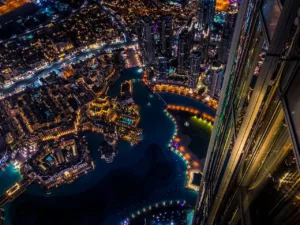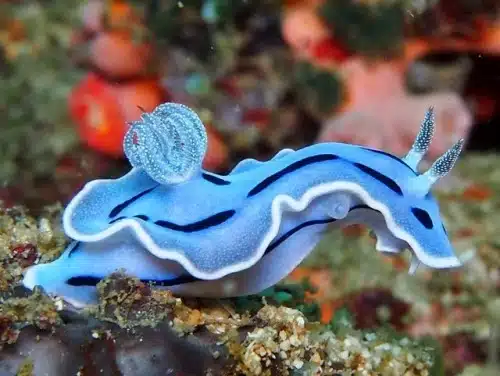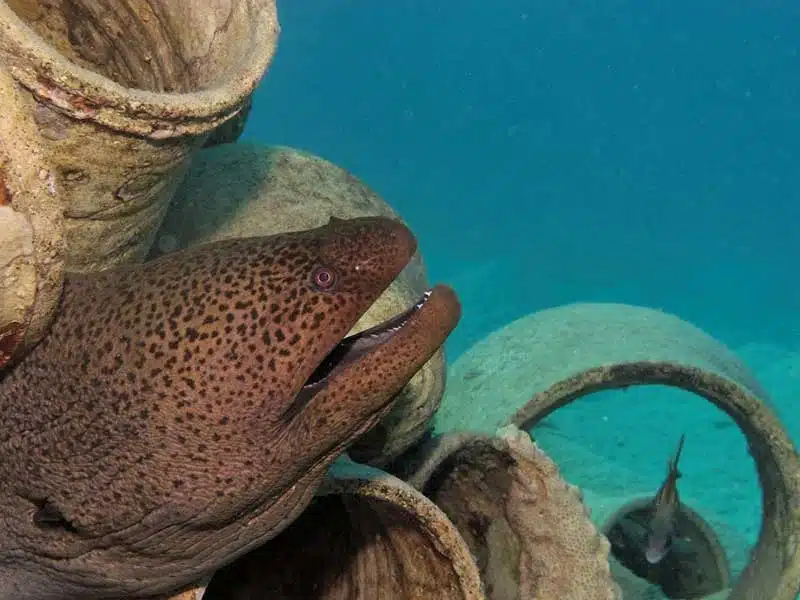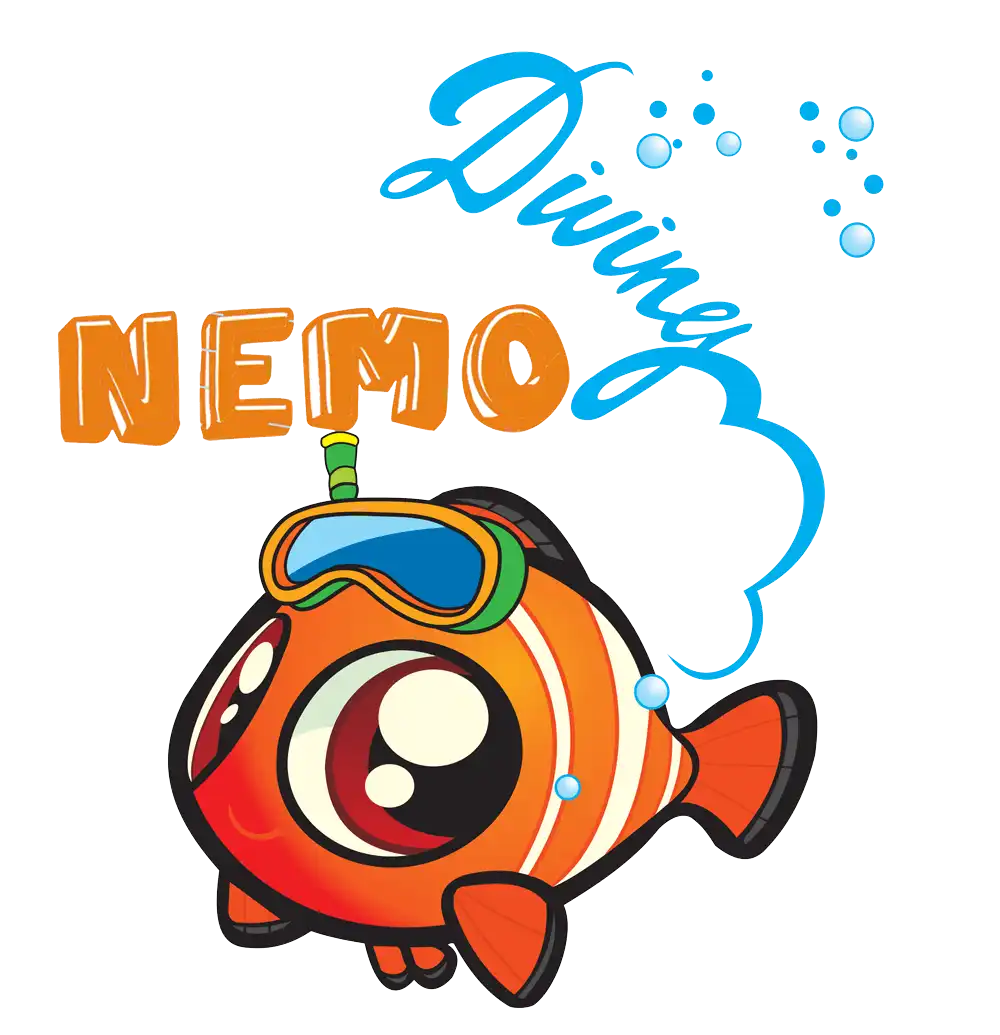
What happens to cars when they reach the end of their operational life cycle? Most of them are torn apart for scraps and end up at junkyards. But a few lucky ones get to serve a second purpose in life like the cars at the Car Cemetery at Fujairah.

You won’t find an underwater graveyard of discarded vehicles like this elsewhere in the world. The main site encompasses about 60m x 60m in open water and has a total area of at least 200m x 200m. The Car Cemetery spans four nautical miles from Khor Fakkan port and the site has an estimated 200 vehicles consisting of cars and trucks. These non-operational vehicles were sunk in 1988 to create artificial reefs and promote biodiversity in the waters of Fujairah. However, in 2007, Cyclone Gonu lashed UAE with heavy rains and winds which brought down the number of wrecks to 50. Many of these vehicles have sunk into the sand leaving fragments such as tires, fenders, steering wheels, and chassis.
Over the years, the site has turned into an important habitat for a variety of marine life. It has also become a favorite area for wreck scuba diving in Fujairah.

One of the enchanting creatures that inhabit this interesting wreck site is the bottom-dwelling nudibranch, a.k.a. sea slugs. Think of these shell-less mollusks as artworks of Mother Nature because they exhibit fascinating color combinations, intricate patterns, and different shapes. Nudibranchs usually have an oblong shape but they can be thick or flat. Some sea slugs are as small as 0.25 inches while others can grow as long as 12 inches.
Did you know that the colors of nudibranchs are derived from the food they eat? These carnivores may feed on sponges, algae, anemones, barnacles, and corals. Some may even prey on other nudibranchs. There are species that camouflage themselves but others like to flaunt their vibrant hues to warn predators that they have foul-tasting poisons.
These jelly-bodied nudibranchs are a delight for underwater photographers, especially those who enjoy macro photography. It’s not surprising that they are one of the most photographed sea creatures because of their scene-stealing physical attributes.

Another mesmerizing sea creature that you may encounter during your dive is the seahorse. It’s a type of fish that has an elongated segmented bony body with an upright posture. Instead of scales, the seahorse has a thin layer of skin covering its bony plates. This animal has a head and neck that resemble a horse and a curled tail that it uses to grasp on seaweed or sea fans. When you observe one, you’ll notice that it has a tube-like mouth with no teeth and have small gill openings.
Did you know that seahorses pair for life? Isn’t it romantic? One of the fascinating things about seahorses is their elaborate courtship display. The female meets the male in his territory and they change color when they approach each other. The male parades around the female and the pair goes around an object like a seaweed. This courtship may take an hour and the female later returns to her territory.
It’s a delight to see and observe seahorses in the wild and these shy creatures also make perfect underwater photography subjects. Remember not to use flash when taking photos of these marvelous creatures. Sadly, the number of seahorses is diminishing around the world because of the traditional Chinese medicine trade, habitat threat, and they are being over-collected for aquarium purposes.
If you approach a seahorse, don’t be surprised if it turns its back to you because it’s a natural reaction. Try to stay still and wait patiently for the seahorse to settle and turn back again. Never touch a seahorse thinking that you can coach it to turn because this can cause tremendous stress on the animal. Another thing to avoid is hovering over the seahorse because it might think that you are a predator. It is recommended that you limit your observation to a maximum of five minutes and if the seahorse decides to move away, do not chase after it to avoid stressing the animal.
Keep your eyes open for stingrays that may be hiding in the sandy bottom, waiting to prey on fish or crustaceans. When you see one swimming in the water, make sure that you do not block its path. You can observe how the stingray moves its body in a wavy motion as it propels through the water but remember to keep a safe distance away from the stingray’s striking zone.
You may also spot an eagle ray that likes to swim along the ocean bottom. It has impressive long wings that may stretch more than 7 feet from tip to tip. The eagle ray uses its large nose (rostrum) to sense its prey such as crabs, snails, and clams. It scoops its prey with its powerful jaw and grinds its food with its flat teeth.

Undulated moray eels also reside in this wreck site. This voracious carnivore has a serpentine-shape body with a pattern of lines that run down its body. It’s also possible to come across honeycomb moray eels. These marine creatures like to stick their heads out of their lair and show their massive jaws with needle-sharp teeth. It’s a treat to encounter a moray eel during your dive but always give it a wide berth. Whether you’re a novice or experienced diver, you should never touch or attempt to feed a moray eel.
This artificial reef is also home to other fish like snappers, barracuda, lionfish, trumpetfish, Omani clingfish, pufferfish, parrotfish, Arabian boxfish, angelfish, and flounder.
Join our scuba diving Fujairah trip to experience this awesome wreck site and amazing wildlife encounters.
Experiences
Find the perfect escape
© 2024 NEMO DIVING CENTER
Scuba diving is an exciting and adventurous water sport that offers a chance to explore the beauty of the underwater world and its amazing marine life. The UAE, particularly Dubai, is one of the most popular destinations for scuba diving, attracting divers from all over the world. With its crystal clear waters and diverse marine life, scuba diving in Dubai offers a unique and unforgettable experience.
The cost of scuba diving in Dubai varies depending on the dive center you choose and the type of dive you opt for. On average, a single dive can cost anywhere from AED 250 to AED 550, with the average price for a single dive being around AED 350. This price usually includes all the necessary equipment, such as the dive tank, regulator, and wetsuit, as well as the services of a professional dive guide. At Nemo Diving Center, We offer a wide range of diving packages to suit every budget and experience level.
Diving in Dubai is an incredible experience, and the UAE is home to many dive sites teeming with amazing marine life including colorful soft and hard corals, sea turtles, stingrays, manta rays, moray eels, cuttlefish, octopus, nudibranchs, seahorses, and a plethora of fish species. It is also noted for its incredible dive wrecks that have become rich artificial reefs. These dive sites offer a unique and exciting diving experience, providing a chance to explore sunken ships and other structures that have become havens for marine life.
Come and explore the unique underwater world of Palm Jumeriah in Dubai and incredible dive sites in Fujairah such as Dibba Rock, Sharm Rock, Martini Rock, Snoopy Island, and more. At Nemo Diving Center, we offer dive trips to these amazing dive sites, allowing divers to discover the incredible marine life that has made the wreck its home. We also offer a wide range of other dive sites to choose from, including shallow coral reefs, deep wrecks, and drift dives, providing something for every level of diver.
In conclusion, scuba diving in Dubai offers an unforgettable experience for all levels of diver. With its clear waters, diverse marine life, and incredible dive sites, Dubai is a must-visit destination for any scuba diver. Whether you’re a beginner or an experienced diver, our team at Nemo Diving Center will ensure that you have an amazing time exploring the beauty of the underwater world.
Click one of our contacts below to chat on WhatsApp
Social Chat is free, download and try it now here!
